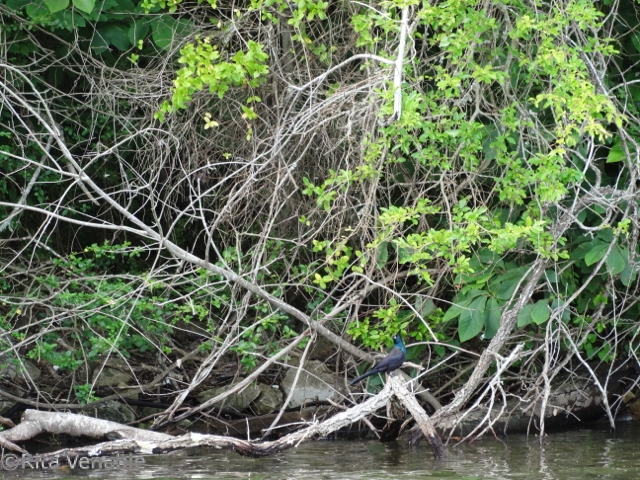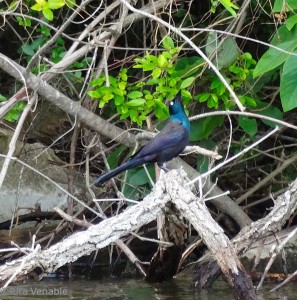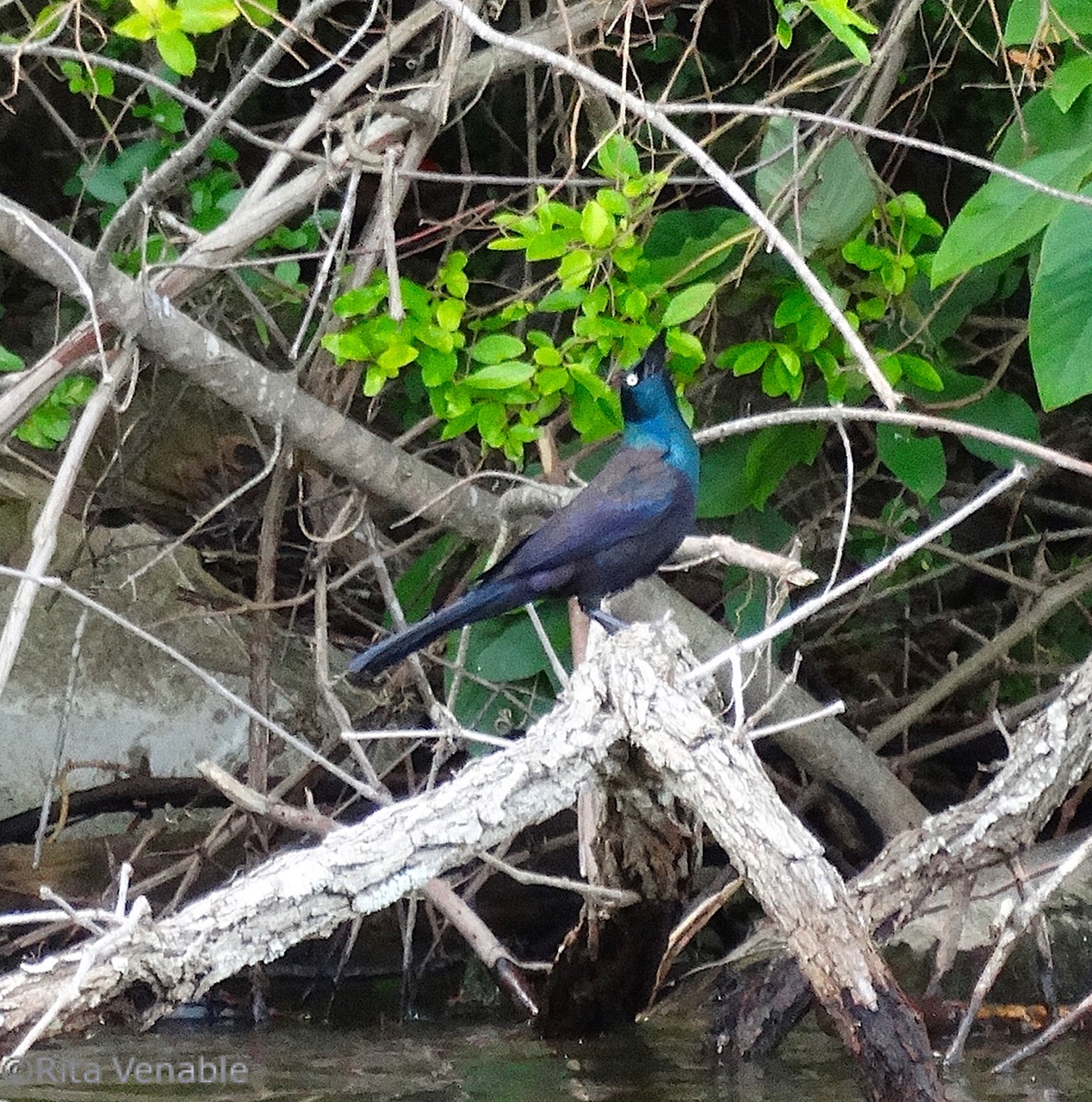A few weeks ago, as my husband and I paddled our kayaks around the islands at Watts Bar Lake, we observed curious behavior in a common grackle (Quiscalus quiscula).

I was trying to get a photo of an osprey nesting on a platform in the lake, when I saw the dark, metallic sheen of medium-size birds, common grackles, tussling about in the shoreline shrubbery. They looked and sounded as if they were fighting or that a predator was pursuing them.
But what were the grackles fighting about or trying to escape from? Each time the grackles fluttered around, some insects, which looked like moths, would fly out in a cloud. Then, the birds flapped out into the open on the low shrubby branches overhanging the water and ate the insects—they were flushing up the insects on purpose so they could eat them.

Common grackles are members of the icterid family of songbirds that also includes orioles, meadowlarks, and blackbirds. Most of these birds have the family resemblance of a straight, long, and pointy bill. Many have successfully adapted to habitats that humans have changed such as urban parks, agricultural fields, and other open areas such as the lakeshore where we were observing them that day.
In a few minutes, one grackle pointed its head upward exposing its throat. I surmised it was taking a drink of water like a chicken, when, actually, it was warning other birds to back off of the prey in its hunting ground. In the excellent book The Sibley Guide to Bird Life and Behavior (Elphick, Dunning, and Sibley 2001 549), there is an explanation:
The icterids have some very obvious and stereotyped displays. A prominent one is the bill-up display, a sign of aggression in which the bird sleeks down its plumage and points its bill up while facing another bird. Often the recipient of the display will return a bill-up display to the first bird. This warning display is often given in foraging situations when one bird comes too close to another.

So bravo to the common grackles that are finding some success surviving in a wildlife-challenged world. Scaring up your own food and warning potential interlopers to back off or else must be a winning combination.
